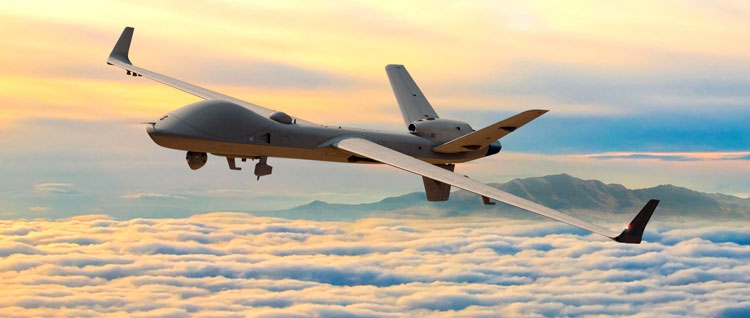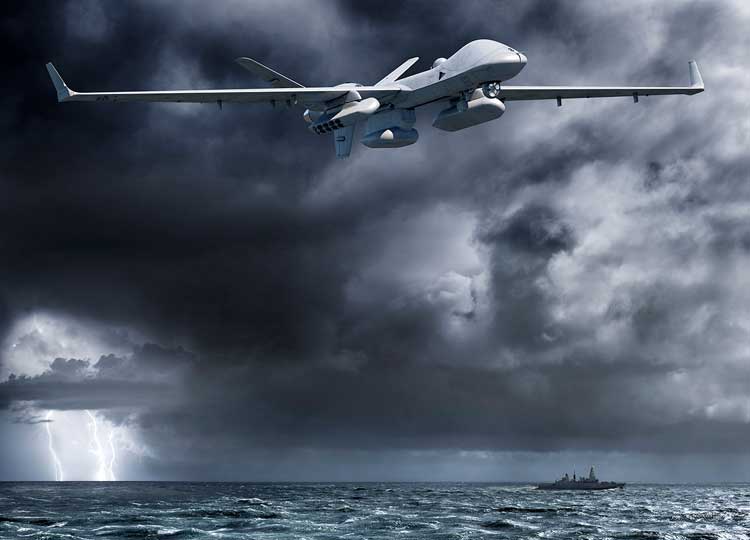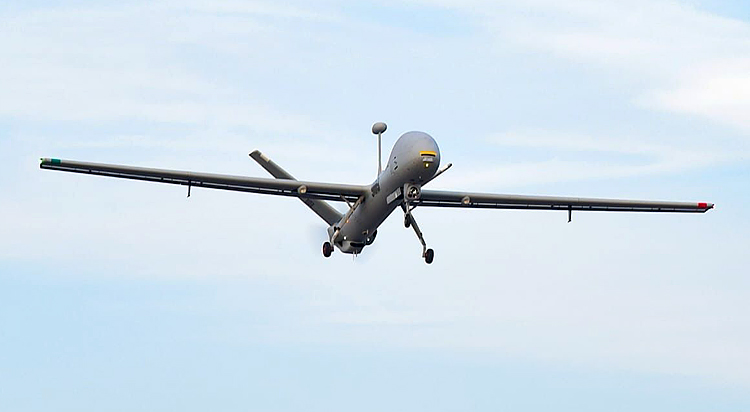INDIAN ARMED FORCES CHIEFS ON OUR RELENTLESS AND FOCUSED PUBLISHING EFFORTS

The insightful articles, inspiring narrations and analytical perspectives presented by the Editorial Team, establish an alluring connect with the reader. My compliments and best wishes to SP Guide Publications.

"Over the past 60 years, the growth of SP Guide Publications has mirrored the rising stature of Indian Navy. Its well-researched and informative magazines on Defence and Aerospace sector have served to shape an educated opinion of our military personnel, policy makers and the public alike. I wish SP's Publication team continued success, fair winds and following seas in all future endeavour!"

Since, its inception in 1964, SP Guide Publications has consistently demonstrated commitment to high-quality journalism in the aerospace and defence sectors, earning a well-deserved reputation as Asia's largest media house in this domain. I wish SP Guide Publications continued success in its pursuit of excellence.
- Operation Sindoor: Resolute yet Restrained
- India’s Operation Sindoor Sends a Clear Message to Terror and the World – ‘ZERO TOLERANCE’
- Japan and India set forth a defence cooperation consultancy framework, talks on tank and jet engines
- Terrorist Attack in Pahalgam in Kashmir: Unfolding a long surgical war against PAK
- Lt General Pratik Sharma takes over Command of Indian Army's Northern Command
US MQ-9B Drones For India
Securing India's borders from the above with a strategic leap into Unmanned Aerial dominance
 |
The Author is Former Director General of Information Systems and A Special Forces Veteran, Indian Army |

On February 2, 2024, the US State Department notified Congress of its determination to approve the potential sale of 31 x MQ-9B SkyGuardian drones and related missiles, bombs and other equipment to India in a deal estimated to be $3.99 billion. This is 23 years after the US used the MQ-9 for a hellfire missile strike. In recent times, the MQ-9B drone was used by the US to kill ISIS-Khorasan leader Abu Sayed, Iranian General Qassem Soleimani, and Taliban leader Mullah Mansour.
The State Department's notification to the Congress came after the chair and ranking members of the Senate Foreign Relations Committee and House Foreign Affairs Committee gave a nod to the deal. This is the first but most important step in the process to get legislative clearance, given the power of the committee leadership that spans across both the Republican Party and the Democratic Party.
The official US government statement said that the "proposed" sale will "support the foreign policy and national security objectives of the United States by helping to strengthen the US-Indian strategic relationship and to improve the security of a major defence partner which continues to be an important force for political stability, peace, and economic progress in the Indo-Pacific and South Asia region". It added that the sale will help "improve India's capability to meet current and future threats by enabling unmanned surveillance and reconnaissance patrols in sea lanes of operation". The statement also outlined India's request for the drones and all the related equipment.
US State Department notified Congress of approval for sale of 31 MQ-9B SkyGuardian drones to India, valued at $3.99 billion
The Indian Government has requested to buy 31 MQ-9B SkyGuardian aircraft: one 161 Embedded Global Positioning and Inertial Navigation Systems (EGIs); 35 L3 Rio Grande Communications Intelligence Sensor Suites; 170 AGM-114R Hellfire missiles; 16 M36E9 Hellfire Captive Air Training Missiles (CATM); 310 GBU-39B/B Laser Small Diameter Bombs (LSDB); and 8 GBU-39B/B LSDB Guided Test Vehicles (GTVs) with live fuses, according to the US State Department.

Earlier, on January 31, 2024, US State Department spokesperson Mathew Miller had stated, "Generally, the US-India Defence Partnership has seen significant growth over the past decade. The drone deal is a proposed sale that was announced during Prime Minister Modi's visit last year. We believe it offers significant potential to further advance strategic technology cooperation with India and military cooperation in the region. Congress plays an important role in the US arms transfer process. We routinely consult with the members of Congress on the Foreign Affairs Committees before our formal notification, so we can address questions that they might have."
For the deal to commence, a Congressional nod is required, and a Letter of Approval (LOA) will be sent to India after 30 days following the approval of the procurement by the Congress. The process also involves price negotiations after the LOA is formally sent to India. US Senator Ben Cardin (D-Md), Chair of the Senate Foreign Relations Committee, issued a statement on his approval of the sale of MQ-9B drones to India, following assurances from the administration about steps taken to address recent allegations of transnational repression.
Deal aims to strengthen US-Indian strategic relationship and enhance India's defence capabilities in the Indo-Pacific region
India's Ministry of Defence (MoD) had approved the procurement of MQ-9B drones from America's General Atomics in June 2023 and the Joe Biden administration had reportedly pushed New Delhi over the deal ahead of a state visit by Prime Minister Narendra Modi. While the Indian Navy will get 15 out of the 31 MQ-9B drones, the Indian Army and the Indian Air Force will get eight each of these high-altitude long-endurance drones.
The Indian Navy already operates two unarmed MQ-9B Predator drones from Rajali air base in Tamil Nadu, which are on lease from the US. These two drones have taken Indian maritime domain awareness to a different level, especially since the Indian Navy is battling sea pirates in the Arabian Sea, as well as in the Red Sea. However, these two UAVs are not satellite-linked, which means they are tied to a ground/sea station with a maximum communication range between 150 and 200 km. This limits their range, unlike the MQ-9B, which can go around the world.

General Atomics describes the MQ-9B SkyGuardian, as well as its maritime brethren the MQ-9B SeaGuardian, as a descendant of the company's famous MQ-9A Reaper. With a 79-foot wingspan, General Atomics says the MQ-9B "provides enhanced payload capacity and an open architecture system that enables the aircraft to integrate the most advanced sensor payloads for intelligence gathering, survivability, and even kinetic payloads for more complex operational environments." However, their sub-surface record is dismal, in that, there is no record of these drones sighting submarines even in shallow waters.
As for the timeframe for the deal to materialise, US State Department spokesperson Mathew Miller has said, "I cannot give a timeline. This was the initial step today. Notifying Congress of the exact timeline of the delivery is something that we will explore with the government of India over the coming months."
Indian Navy to receive 15 MQ-9B drones, while Indian Army and Air Force will receive 8 each
Clearly, it will likely take many months before the MQ-9B SeaGuardians begin arriving in India, especially since the price negotiations itself may require considerable time. Besides, the question is also of "offsets" which has been an on and off policy of our bureaucrats depending on particular situations. According to the Pentagon, "The principal contractor will be General Atomics Aeronautical Systems, Poway, CA. The purchaser typically requests offsets. Any offset agreement will be defined in negotiations between the purchaser and the contractor."
Interestingly, General Atomics has said it is working with US officials to clear the way for another large sale, this one for MQ-9Bs to the United Arab Emirates at an estimated $3 billion that got wrapped up in a bigger, but more controversial F-35 sale.

Concurrently, new reports of February 3, 2024 have intimated that India's first private UAV manufacturing facility has delivered over 20 "assembled" Hermes 900 medium-altitude, long-endurance (MALE) UAVs to Israel. Hyderabad-based Adani-Elbit Advanced Systems India Ltd, a joint venture company between India's Adani Defence and Aerospace and Israel's Elbit Systems, became the first entity to manufacture the UAVs outside of Israel.
The Hermes 900 UAVs were delivered complete with carbon composite Aerostructures manufactured at the Adani facility in Hyderabad. The Hermes 900 is equipped with a variety of high performance sensors, allowing it to detect ground or maritime targets, over a wide spectral range. It can also be used for attacks on ground targets. On January 11, 2024, the Indian Navy received the first 'Made in India' MALE drone, Drishti-10 StarLiner, as already reported in these columns earlier.





